Monocot and Eudicot variety: Illustrations
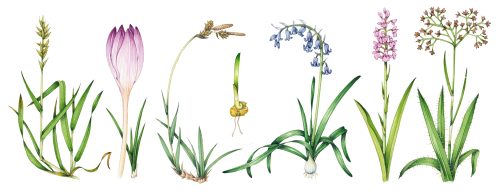
Monocots and Eudicots are enormous groups, making up over 80% of plants on earth. During a recent job, illustrating the Brecknockshire flora, I was commissioned to create two illustrations highlighting the most interesting, beautiful, and most locally important members of these groups.
Moncots vs Eudicots
There are several main differences between these two enormous groups. The leaves of a monocot mostly have veins running parallel to each other, not branching or netted as they are in Eudicots. They often spring from the base of the plant. Vascular tissue in monocots is arranged in bundles, not rings, and doesn’t form wood. The seedlings differ – monocots grow from a grain (or bulb) while eudicots grow from a two-sided seed. Each side is known as a cotyledon (hence the name). Monocot roots are fibrous and lack a main tap-root. Flowering parts of monocots tend to be in multiples of three, not of four, five, or sevens (eudicots). For more on telling monocot and eudicot plants apart, click here.
Seedlings: germination
As well as the plants, a seedling from each group needed to be drawn. Amazingly, there’s very little good reference online to show the vital differences between Monocot and Eudicot seedlings. Most of the images are so diagrammatical as to be meaningless, and photo references were blurry and unclear.
Only one thing to do. Germinate my own. So I put a pea and a maize grain on blotting paper to germinate, and indeed that’s what they did. The maize grain seedling emerges from the grain, and sends out roots. Its leaves are elongate and green with parallel veins

Germinating Maize grain
The Eudicot, the pea, looks very different. it is perhaps more what one thinks of as a “typical seedling”. there are two leaves, emerging opposite each other. The seed is composed of two sides or cotelydons. Again, roots grow away from the plant (unfortunately I’ve lost my photo of this). With eudicots, there’s far more branching on the initial roots.
In both cases the roots grew sideways which I had to take into account at drawing. This lateral growth was simply cause they were growing on wet paper on a solid surface, so were unable to send roots downwards.
Seedlings
Once the pencil drawings had been tweaked and given the go-ahead, I added colour. Seedlings are a very specific bright shade of green. Capturing this was difficult, but I think they came out ok.
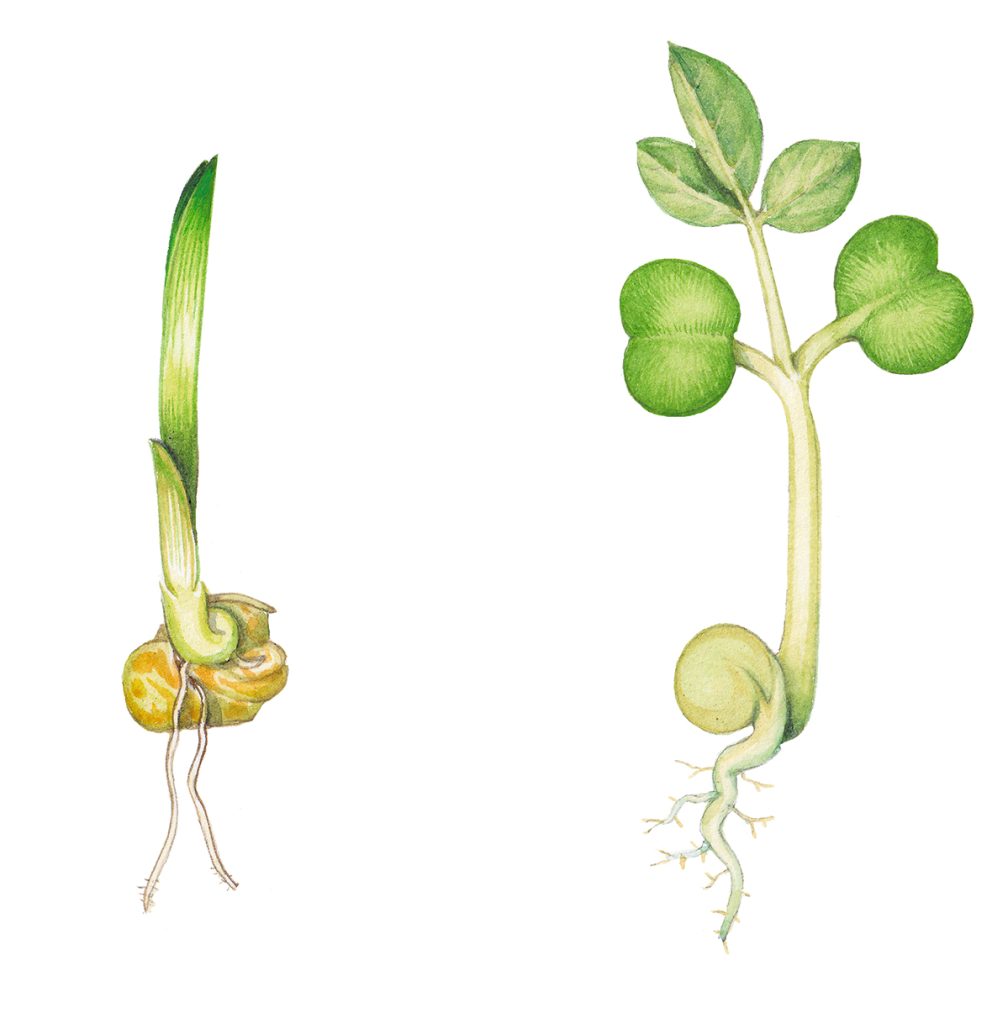
Eudicot and monocot seedling comparison
Monocot variety
The commissioner gave me a list of different monocot plants I could choose from to include in the piece. We agreed we wanted a grass species, a sedge, and a rush. (Of course I agreed, you know about my obsession with Grasses sedges and rushes!)
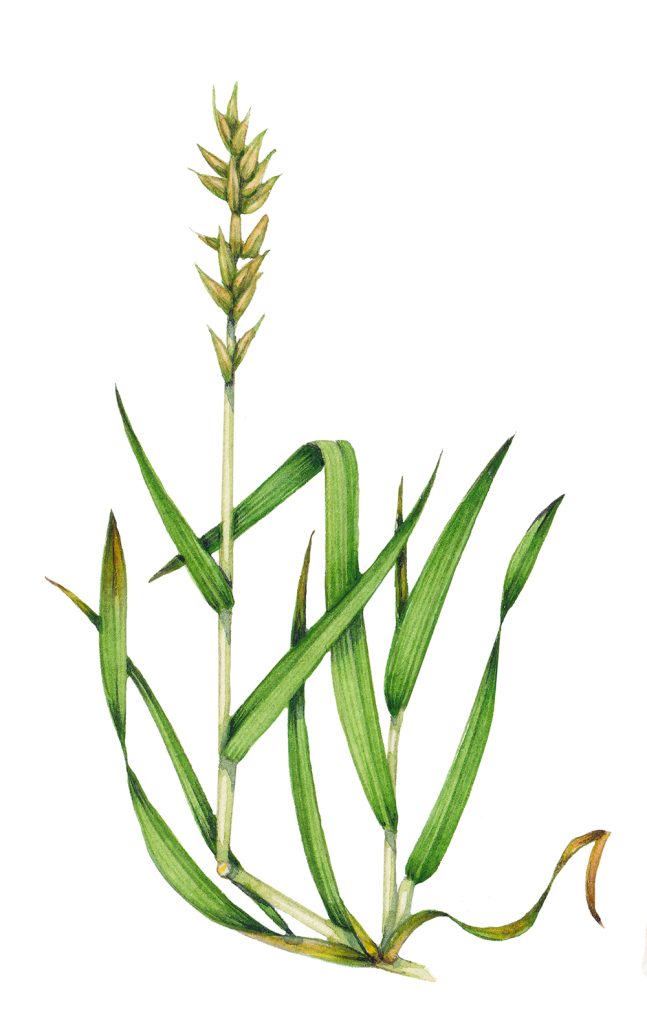
Sweet vernal grass sketch Anthoxanthum odoratum
One of the great things about working with the grasses and sedges is that you can manipulate their form a little more freely than with many plants. For the composition, I needed three plants either side of the central portrait of a seedling. The curve of the stem of the Mountain sedge was the perfect tool to frame the left side.
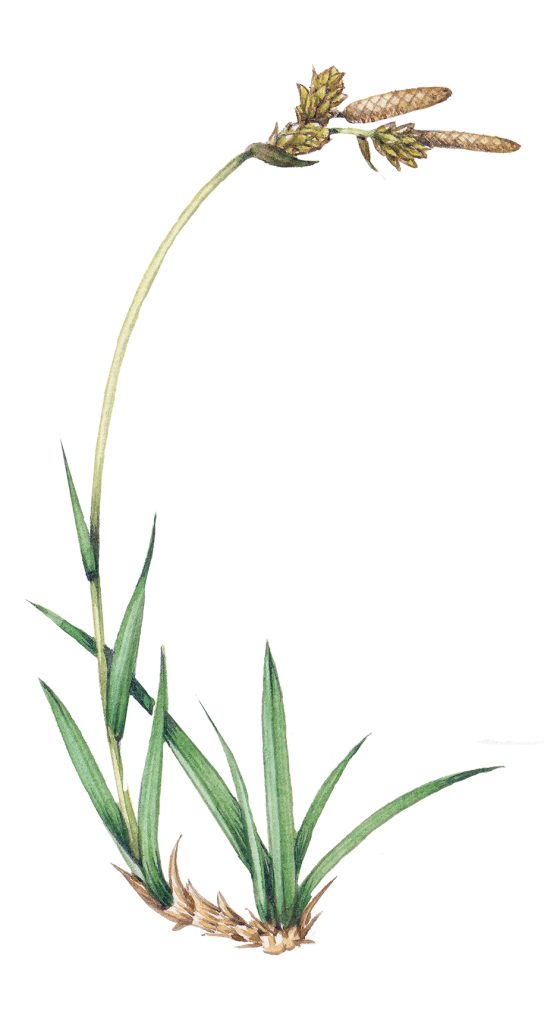
Mountain or soft leaved sedge sketch Carex montana
And finally, a rush. The habit of this plant is less flexible, so I stuck it out on the end of the composition.
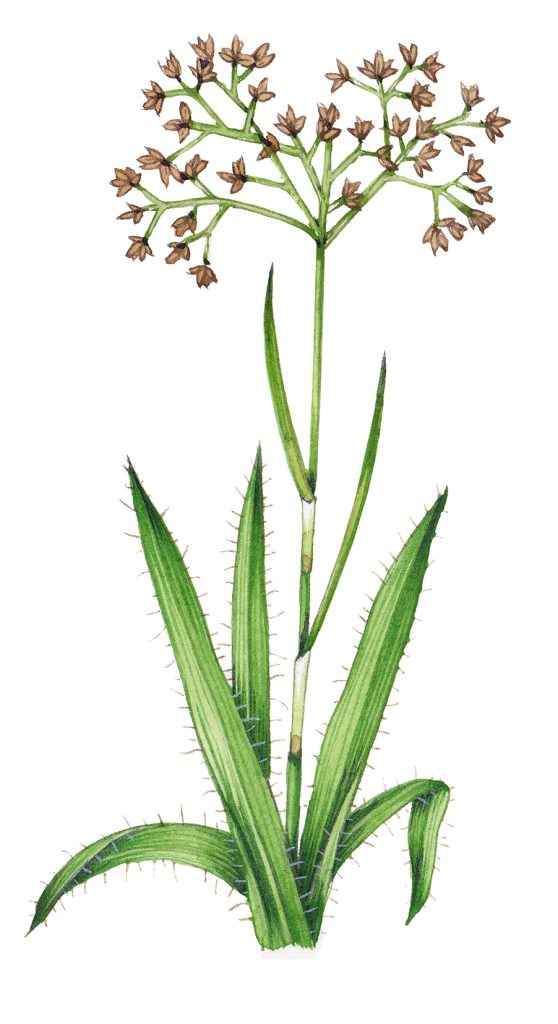
Wood rush sketch Luzula sylvatica
We also wanted to add a dash of colour. The Bluebell and an Orchid would provide this.

Bluebell sketch Hyacinthoides non-scripta
The bluebell also has a drooping and curved flowering head. Perfect for framing the other side of the monocot seedling.
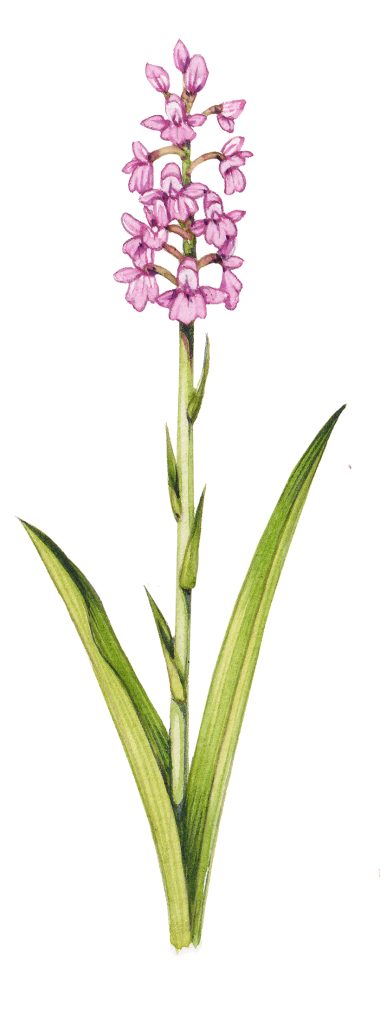
Fragrant orchid sketch Gymnadenia conopsea
Balancing the colour of the composition
As well as thinking about how the composition would frame the seedling, I also had to be sure that the colour flowed across the page. The locally abundant monocot Autumn crocus was brilliant for this. it echoed the pink of the orchid.
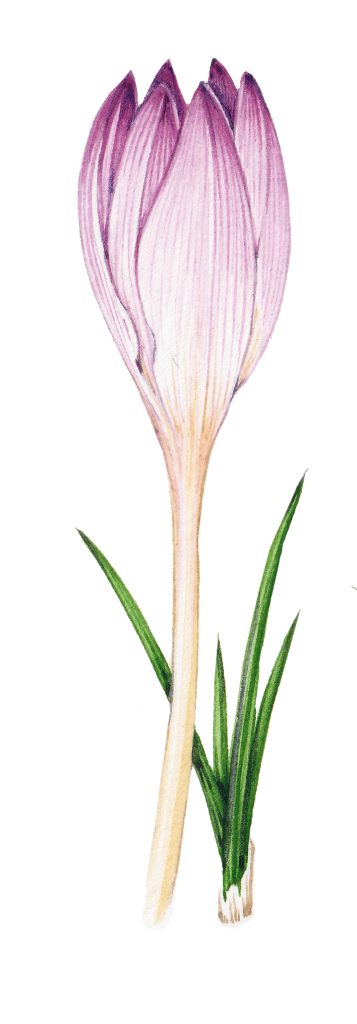
Autumn crocus or meadow saffron sketch Colchium autumnale
Other monocots which don’t grow wild in Brecknockshire include tulips, palms, lilies, and iris.
The completed monocot variety illustration looks like this:

Brecknockshire flora: Variety of monocots with seedling
But it’s not just an illustration of monocot variety. It needs to be Monocot and Eudicot variety!
Eudicot variety
The variety of eudicots in astonishing. It was really tough deciding what species to include. We needed to show ones which are locally important, and also pretty ones. We also wanted to suggest the variety, as we did with the monocots. I angled to include some of my favourites, and the client put forward his. Eventually we whittled it down to six. Then came the difficulty of making the composition work. Again, I needed the seedling framed by other plants, within a circle in the middle of the composition.
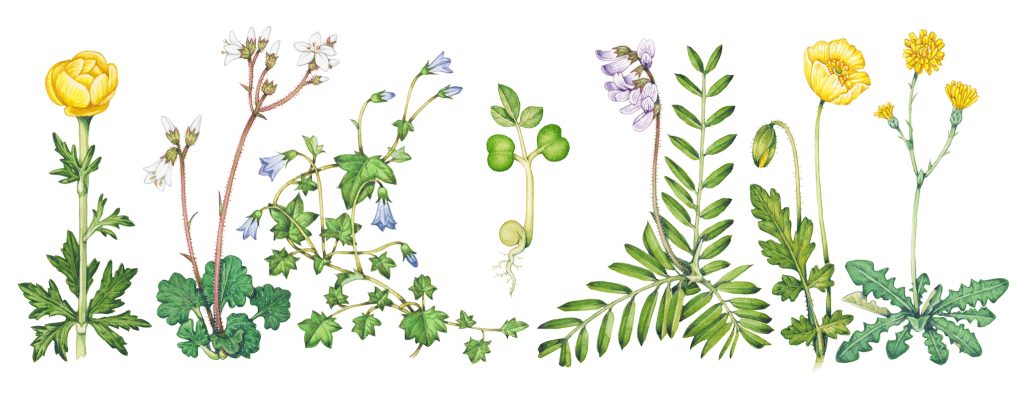
Eudicot plant variety with eudicot seedling
Individual Eudicots
There was the same issue of balancing the colours. I was able to have yellow flowers flanking the composition on either end, and blueish flowers surrounding the seedling.
The Globe flower used to be abundant across the area, less so as a result of new farming practices. It is rarely fully open, so this needed a tweak between initial pencil rough and final illustration, to close the petals around the stamens.
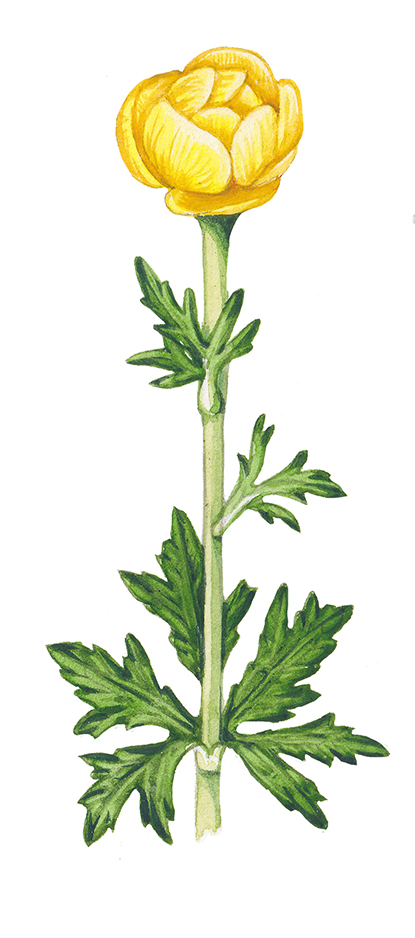
Globe flower sketch Trollius europaeus
Meadow saxifrage is another locally important wild flower. I’ve seen it growing wild, and it’s very pretty. Including white flowers at such a small scale was difficult so I left them outlined lightly in graphite (for more on painting white flowers check out my blog).

Meadow saxifrage sketch Saxifraga granulata
The next flower, Ivy-leaved Bellflower, was a gift. Not only is it really important for Brecknockshire, but it also has little leaves and a sprawling habit or growth. this allowed me to play with the leaves and to manafacture a frame of sorts on the left side of the seedling. It’s a tricky blue to mix as there’s plenty of purple in it, but I was so pleased to include it as I have it growing in my garden.
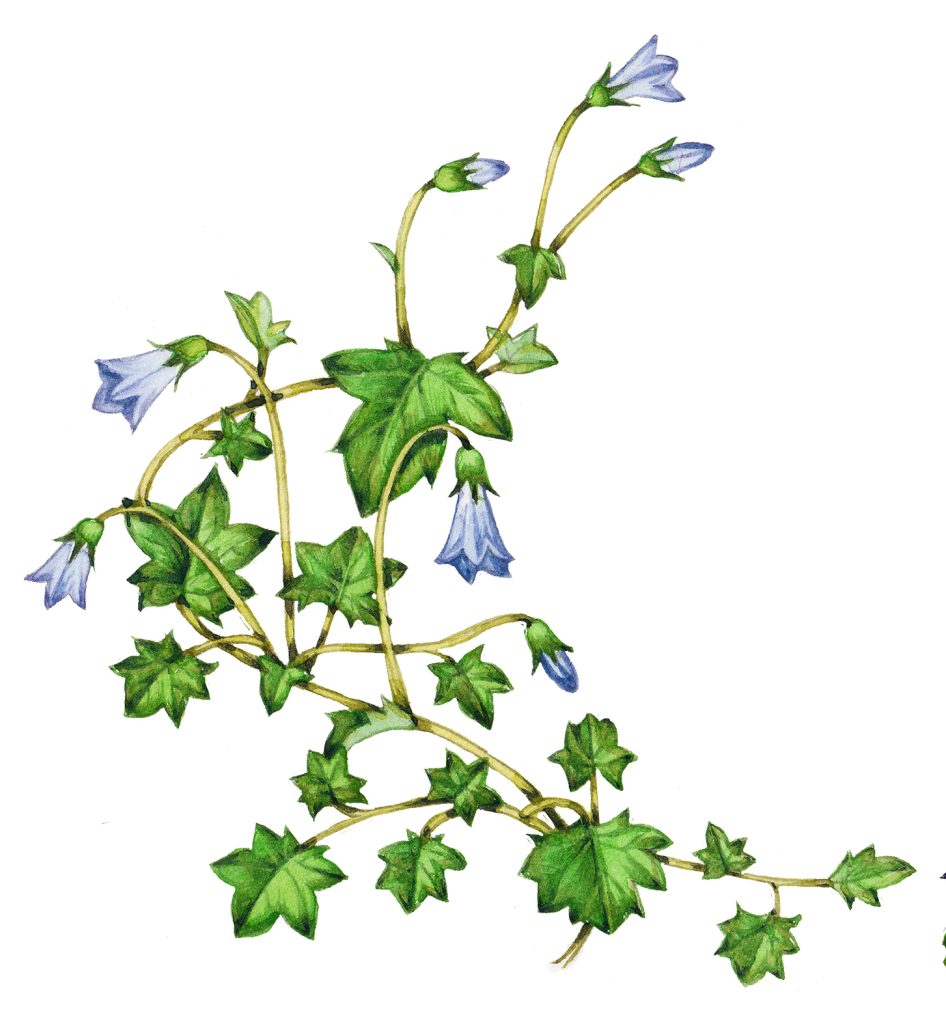
Ivy-leaved Bellflower sketch Wahlenbergia hederacea
Other side of the seedling and we find a vetch. This ends up forming the right hand side of the seedling’s frame, but it feels a touch artificial to me. The botany is correct, but I feel I played a little too much with the lie of the leaves. I did, however, love popping in the distinct white hairs where they overlap the shaded parts of the leaves.

Wood or Upright Bitter-vetch sketch Vicia orobus
The Welsh poppy was on both of our lists. A Welsh species, a pretty flower, and it also has fabulous curved buds. Including it was a no-brainer. It also echoed the yellow of the Globe flower.
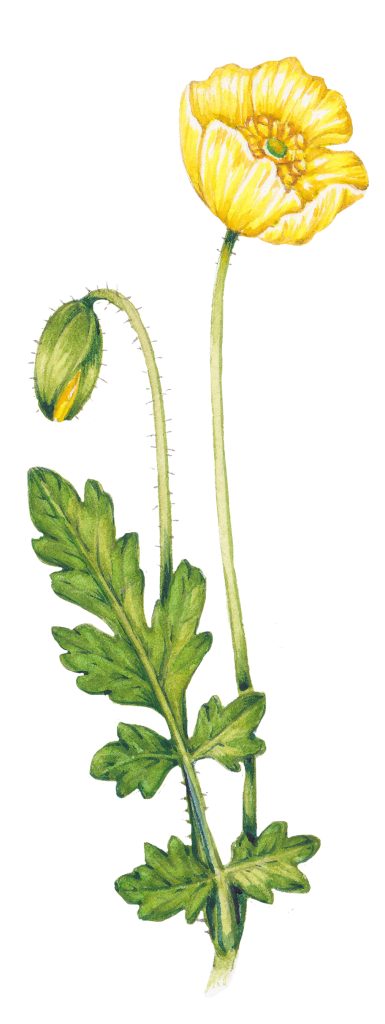
The last flower had to be a member of the dandelion family. I can’t tell them apart, but luckily the guy who commissioned this illustration for the Brecknockshire flora, can. He settled on one of the Hawkweeds and gave me plenty of pointers and ref to ensure I illustrated it correctly.
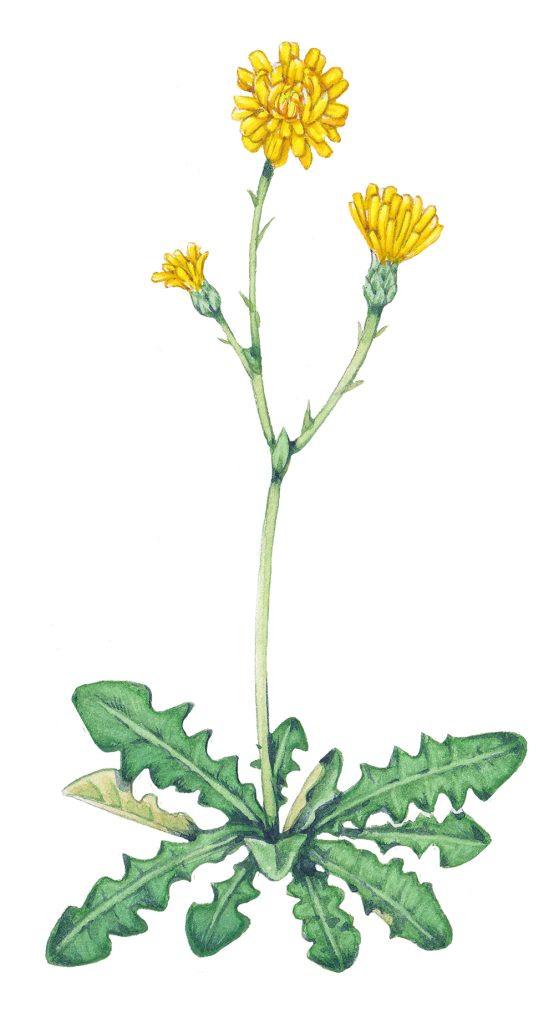
Hawkweed sketch Hieracium
Conclusion
So you can see that just within these two simple illustrations there’s a world of variety. The format, long and thin, was pre-set and a bit challenging. Seedlings had to be grown. The species had to be whittled down. Monocot and dicot variety needed be shown. But the eventual result is a couple of illustrations I’m really pleased with. And I also learned loads as I completed the images – perfect!

